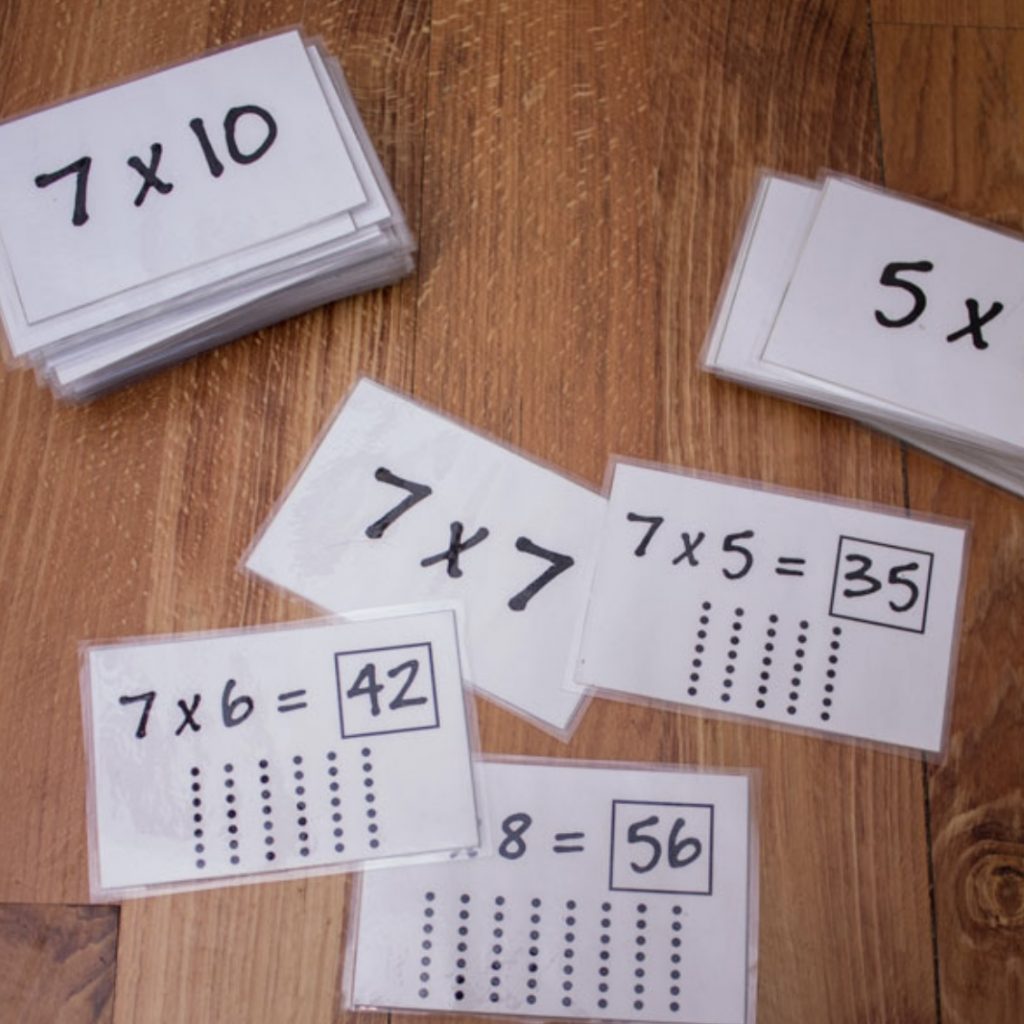Hey folks…I recently came across this article about learning multiplication facts. Here is my summary of it with some addition thought sat the end…
A 2022 study from the Netherlands compared two methods of practicing multiplication facts:
- reciting equations displayed on a whiteboard and singing songs
- practicing with flash cards.
Teachers used the same scripted lesson to deliver a lesson on multiplying by three. Half of the students practiced their facts through recitation and singing while the other half practiced with their own personal set of flashcards with the answers on the back.
Prior to receiving their multiplication lesson, students scored an average of 3 out of 10 on the pretest. Afterwards, the reciters/singers improved to 6 out of 10 while the flashcards students improved to 8 out of 10.
Retested one week later the flashcards students continued to significantly outperform the reciters/singers. This shows that flash card practice not only produces better short-term memories, but also better long-term ones – the ultimate goal.
WHY IS THIS?
Flashcards take advantage of a well-studied concept called “spaced retrieval practice,” in which the act of remembering consolidates information and helps the brain form long-term memories.
As students use flashcards they strain to recall the answer on the reverse side. The strain itself is a powerful tool for remembering facts, particularly when you are given the correct answer immediately after making a stab at it and then get a chance to try again.
Giving students frequent quizzes is another option because they also require students to retrieve new information from memory. However, students need to have the quiz immediately corrected afterwards (teacher reads the answers out one by one) and the students fix their errors. These types of quizzes should not be timed!
SO, WHAT SHOULD TEACHERS DO?
Continue doing a thorough job of teaching the many facets of multiplication facts: equal groups, skip counting, using strategies, etc.
When it is time for students to practice, they should use their own personal set of flashcards to practice. They sort their cards into two piles: correct and incorrect. Then immediately repractice the incorrect facts. After a day or so, students will begin to forget their facts and it is time to use the flashcards again. THIS is spaced retrieval. Here is a similar flashcard protocol I used with my students with great success.
If you get nauseous at the thought of giving dozens of 3×5 cards to each of your students, then Multiplication By Heart is for you. This web tool is entirely free and handles the distributed retrieval automatically for you. As students use Multiplication By Heart it sorts the known and unknown facts into two piles (electronic of course) for each student. And it knows just when to reintroduce a known/unknown facts for the student to recall. If you haven’t already, give Multiplication By Heart a try. It seamlessly integrates with your Google Classroom, so getting started with MBH couldn’t be easier.
.
.
.

